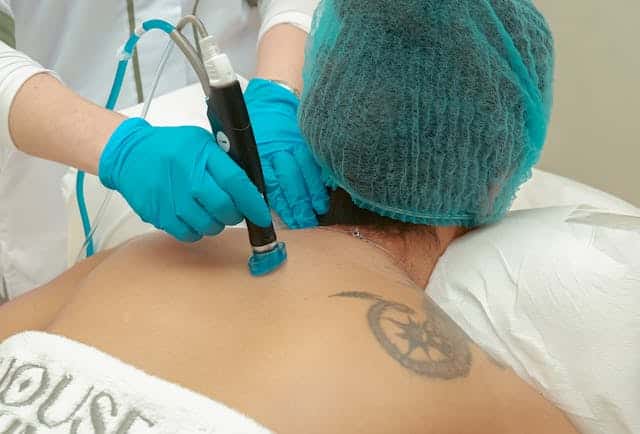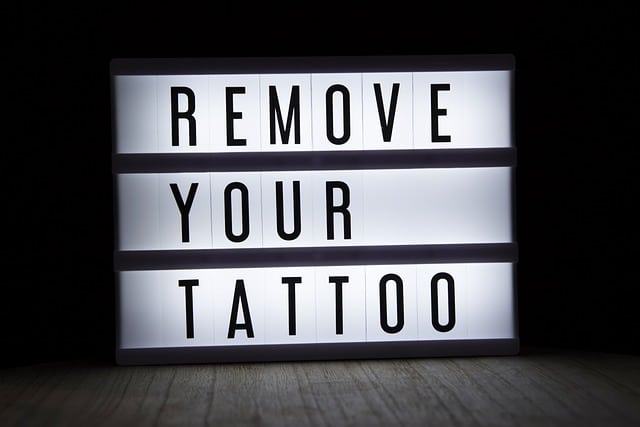How Safe Is Tattoo Removal? What You Need to Know
Wondering how safe is tattoo removal before committing to the process is both smart and necessary, especially as more people seek to erase unwanted ink for personal or professional reasons.
Tattoos can be powerful symbols of identity, experiences, and creativity.
However, as life changes, so do our perspectives—and sometimes, what once felt meaningful no longer resonates.
As a result, tattoo removal procedures have become increasingly popular.
Whether due to personal growth, professional requirements, or changes in taste, many people eventually consider tattoo removal.
The question many ask before beginning the process is simple but essential: how safe is tattoo removal?
While laser tattoo removal is the most common and effective method, safety depends on several factors—including the provider, technology used, and post-care routine.
Here’s what you need to know to make an informed decision about tattoo removal.
What is Laser Tattoo Removal?

Tattoo removal has come a long way since the days of cryotherapy, surgical excision, and dermabrasion.
These older methods often left scarring or residual skin damage, especially when used on professional tattoos that reach deep into the dermis.
Today’s technology—specifically Q-switched and picosecond lasers—has dramatically improved both safety and effectiveness.
Lasers work by targeting tattoo pigment with precise bursts of high-intensity light, a process known as selective photothermolysis.
This means the laser’s energy is absorbed by ink particles while minimizing injury to the surrounding skin.
This specificity is possible because laser light is collimated, coherent, and monochromatic—allowing it to hone in on specific ink colors without affecting neighboring tissue.
The pulse duration of the laser is a critical factor in safety.
Early lasers delivered energy in the millisecond range, which often overheated skin and increased risks like inflammation, scarring, and pigment changes.
These issues occur when the laser pulse lasts longer than the thermal relaxation time of the ink particles—roughly 10 nanoseconds.
When energy lingers too long, it spreads into surrounding tissue, causing collateral damage.
This problem was largely resolved with the invention of Q-switched lasers, which emit light in nanosecond bursts short enough to break down ink effectively while sparing skin tissue.
These lasers became the gold standard for years, but even more recent innovations—picosecond lasers—have taken safety to a new level.
These devices deliver ultra-short energy pulses that end before the first photons even hit the skin, reducing heat transfer and minimizing side effects like burns, hypo- or hyperpigmentation, and scarring even further.
The success and safety of tattoo removal depend on several variables, but the selection of the correct laser wavelength and pulse duration for the individual’s skin type and tattoo color is arguably the most crucial.
This level of customization, enabled by technological advances, is what makes modern laser tattoo removal far safer and more effective than any prior technique (Hohman & Ramsey, 2025).
What to Expect from a Laser Tattoo Removal Procedure
Most tattoos require multiple sessions for noticeable fading or removal. The exact number depends on:
- Tattoo size and color
- Ink depth and density
- Skin type and tone
- Age of the tattoo
- Overall health and immune function
Black ink tattoos respond best, while colors like green, blue, and yellow may require additional sessions due to their resistance to laser wavelengths.
How Well Does Tattoo Removal Work?
Tattoo removal is effective, but results vary based on ink color, tattoo age, skin tone, and the laser used.
Black ink fades the easiest, while colors like green, blue, and yellow are more resistant.
Older tattoos generally respond better than newer ones, and lighter skin tones allow lasers to target pigment more precisely.
Modern lasers—especially picosecond and Q-switched devices—offer the best results with fewer side effects.
Most people need 6 to 10 sessions, and while many tattoos can be fully removed, some may only fade or leave behind faint “ghosting.”
Overall, tattoo removal works well when performed by a skilled provider using advanced technology, but expectations should remain realistic based on each tattoo’s unique characteristics.
Does Tattoo Removal Hurt?
Yes, tattoo removal can be painful, but the intensity varies based on factors like tattoo location, skin sensitivity, ink color, and the laser used.
Most people describe the sensation as similar to a rubber band snap against the skin.
Areas with more nerve endings (like wrists or ribs) typically hurt more, while fleshy areas (like upper arms) are less painful.
Modern lasers like picosecond and Q-switched devices reduce discomfort by targeting ink more precisely and causing less collateral damage.
Pain is usually short-lived and felt during the session, with post-treatment discomfort resembling a mild sunburn.
Clinics often offer numbing creams, cold air devices, or local anesthetics to improve comfort.
While not pain-free, tattoo removal is generally manageable, especially with proper preparation and a qualified provider.
Is Tattoo Removal Safe?
If performed by qualified professionals using modern equipment, laser tattoo removal is safe for most individuals.
However, it’s not without potential side effects.
Common Side Effects and Risks
- Redness and swelling
- Blistering or crusting
- Temporary changes in skin pigmentation
- Mild discomfort during or after the session
These effects usually subside within a few days to a couple of weeks. Severe complications such as scarring or infections are rare, but possible—especially if aftercare instructions are ignored or the procedure is done by unqualified personnel.
Factors That Influence Tattoo Removal Safety
Several personal and procedural factors influence how well your body responds to laser tattoo removal:
- Skin tone: Lighter skin tones tend to respond more predictably, but newer technologies allow safer treatment for darker skin as well.
- Medical history: Autoimmune conditions, diabetes, or blood-thinning medications may increase risk of complications.
- Smoking status: Smoking has been associated with slower healing and reduced tattoo removal outcomes (Sepehri et al., 2017).
- Laser Type: Modern technologies like Q-switched lasers and picosecond lasers are designed to minimize skin trauma while improving ink targeting. These devices are more effective at breaking down pigment and reducing the number of sessions needed, which can ultimately enhance safety outcomes.
Post-Treatment Care: The Key to Safe Recovery
Effective healing from a tattoo removal procedure heavily depends on proper aftercare. These tips can help you minimize side effects and prevent complications:
- Keep the area clean and dry
- Avoid sun exposure or use SPF 30+ sunscreen
- Do not pick at scabs or blisters
- Apply healing ointments as recommended
- Avoid tight or abrasive clothing over the treated area
Some research suggests that collagen tripeptide supplementation may accelerate wound healing and improve skin hydration and elasticity after laser treatments (Choi et al., 2014).
These steps not only reduce the risk of infection and scarring but also help your body clear ink more efficiently.
Choosing the Right Place for Tattoo Removal
Finding a trusted provider is one of the most critical steps to ensuring the safety of tattoo removal. A well-qualified practitioner should:
- Be a licensed dermatologist or certified laser technician
- Use up-to-date, FDA-approved laser equipment
- Offer a detailed consultation and realistic outcome expectations
- Follow industry-standard safety protocols
What to Look for in a Tattoo Removal Clinic
When exploring options for tattoo removal, it’s important to research clinics that prioritize safety, use advanced technology, and employ trained professionals.
Whether you’re located in a major city or a smaller town, finding a reputable provider is essential to minimize risks and achieve the best results.
For example, those searching for Philadelphia, PA laser tattoo removal should look for clinics in the area with certified specialists and a strong track record of successful outcomes.
No matter where you live, the key is choosing a facility that offers personalized consultations, clear expectations, and proper aftercare guidance.
Alternatives to Laser Tattoo Removal
While lasers are the gold standard, there are other tattoo removal options—though most are less effective and carry higher risks.
Tattoo Removal Creams
Over-the-counter creams promise gradual fading but often fail to penetrate deeply enough to reach ink.
They can also cause skin irritation or allergic reactions.
Surgical Excision
This method involves cutting out the tattooed skin and stitching the area closed.
It’s best for small tattoos and guarantees removal—but also results in a permanent scar.
Dermabrasion
This older method sands off layers of skin to remove pigment.
It’s painful, less precise than lasers, and has a longer healing time with higher risk of scarring.
Cover-Up Tattoos
In some cases, opting for a professionally done cover-up tattoo can be more practical than full removal.
This approach involves working with an experienced artist to design a new tattoo that masks the original effectively.
Final Thoughts: How Safe Is Tattoo Removal, Really?
Tattoo removal—especially with lasers—is considered safe and effective when performed by qualified professionals using modern technology.
However, safety is not guaranteed.
The key lies in understanding your skin, your tattoo, and your provider.
For those asking, “Is tattoo removal safe?” The answer is yes—if you take the time to do it right.
By choosing a skilled practitioner, setting realistic expectations, and committing to proper aftercare, you can significantly reduce risks and improve results.
This website does not provide medical advice. This website site does contain affiliate links, and purchases may earn a commission.
Read my Medical Disclaimer, Review Disclaimer, and Publishing Policies for more details. Use of this site indicates acceptance of these terms.



